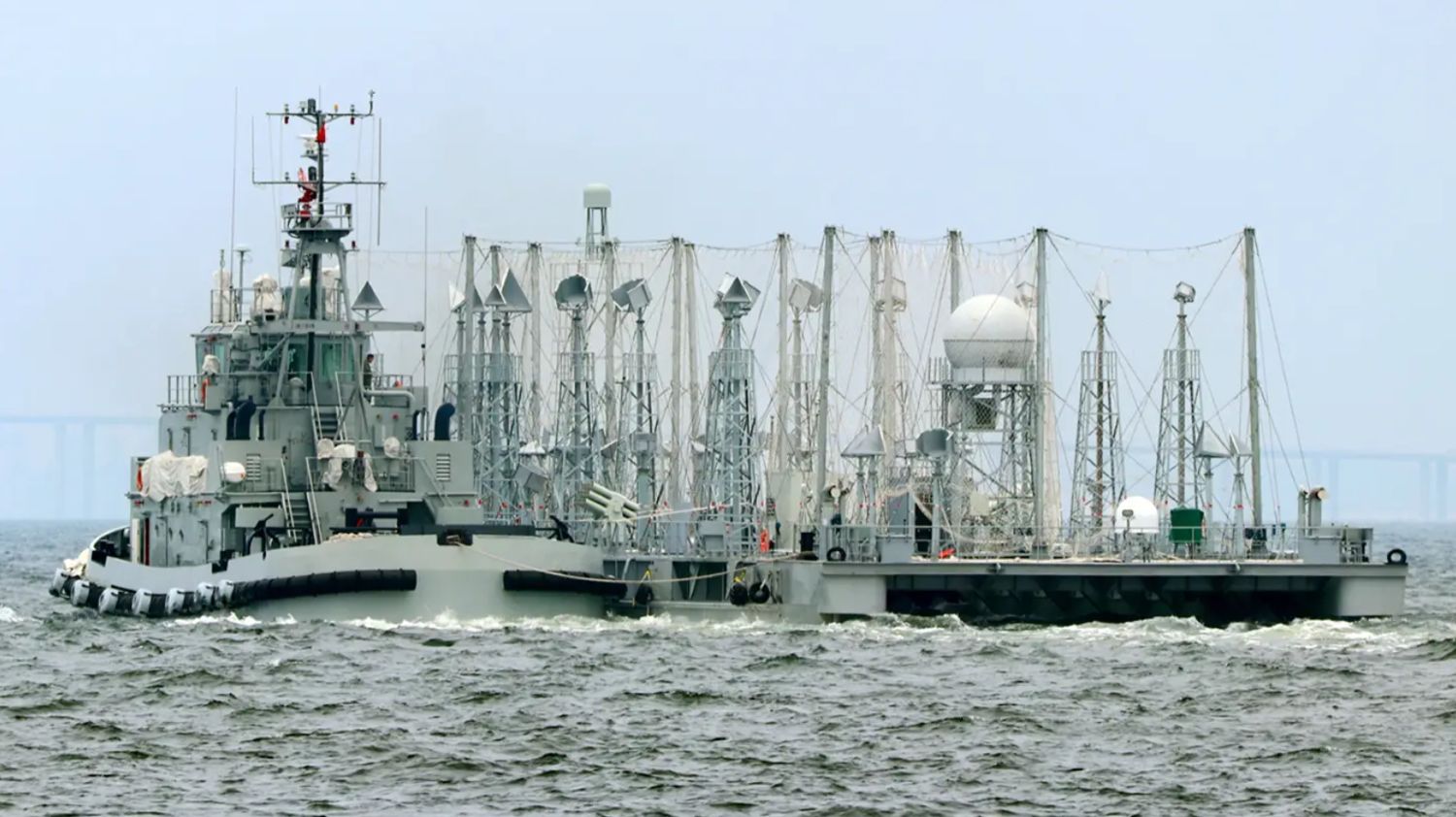China has claimed to have developed a revolutionary system capable of using signals emitted by foreign radars, warships, or early warning planes to track cargo ships on the high seas.
The breakthrough, detailed in a peer-reviewed paper published on December 20 in the Chinese-language journal Radio Science and Technology and reported by SCMP, challenges long-standing assumptions about the exclusivity of radar signals.
The report claimed that a team from the PLA Naval Aviation University and Yantai University demonstrated the unprecedented ability to use potentially adversarial radar signals to detect and track ships entering and leaving ports.
This achievement defies traditional norms, as the complex physical parameters of radar signals were thought to be known only to the sender or its allies since the technology’s invention in 1935.
The system requires only essential equipment like a laptop and a small antenna, and it has substantial implications for maritime security.
The researchers revealed that the technology works well for slow-moving targets at sea, making it particularly advantageous for countries with limited radar networks or budget constraints.
The experiment utilized a signal source from a Chinese military radar; however, the system showcased its capability to capture signals from military platforms of any country in real-world scenarios.

The experiment in the port city of Yantai showcased a simple setup involving a receiving antenna in a residential building connected to an electromagnetic wave analyzer and an ordinary laptop for signal analysis.
Despite the challenges posed by electromagnetic waves reflecting off sea waves, the team claimed to have successfully tracked all commercial ships within a 20 km radius of the shore, which provided crucial intelligence on ship direction and speed.
The report noted that the significance of this technological breakthrough extends beyond tracking cargo ships, as the researchers shared their algorithm for reverse-deriving the operating parameters of military radars from received spectra.
How Feasible Is That Technology?
While Chinese researchers have proclaimed the successful demonstration of this system, the path forward presents its challenges. The team acknowledged the practical difficulties associated with the task.
One such challenge involves the complexities of distinguishing between direct radar signals and reflections off ship hulls. However, the team outlined unique processing methods that showcased a keen understanding of the complexities involved.
Furthermore, the report added that they shared valuable insights into sophisticated data compression and accumulation techniques.
A former member of the US Navy told The EurAsian Times on condition of anonymity, “You gotta look into that claim from the Chinese researchers. Modern military equipment uses encryption to lock down their signals, making breaking into that stuff a real headache.”
He added, “Even if signals can be intercepted, accurately and reliably identifying and tracking ships based on these signals is a complex task. Mistakenly attributing signals or misinterpreting data could lead to incorrect conclusions.”
However, he acknowledged, “If China did cook up something like that, even if it’s not super top-notch, it could come in handy in a tight spot, you know, like during a conflict situation with, say, the US or India.”
Meanwhile, the Chinese scientists also believe that their work could contribute to electronic warfare capabilities for the Chinese military, suggesting applications in electronic surveillance, anti-radiation weaponry, ultra-low altitude penetration missions, and stealth technology.
This development poses potential implications for global maritime security, and smaller nations or forces might gain the strategic advantage of hijacking enemy signals with minimal effort.
This advancement follows reports that suggested Beijing has unveiled a revolutionary electronic warfare weapon design. This is anticipated to impact the dynamics of future military operations significantly.
China perceives electronic warfare as a pivotal component in any potential conflict with the United States or its allied nations. This strategic belief underscores the importance that Beijing places on leveraging advanced electronic warfare capabilities in future geopolitical scenarios.
Additionally, in June 2023, EurAsian Times reported that Beijing is working on an advanced radar system with the capability to monitor multiple targets up to a distance of 3,500 kilometers, approximately matching the distance to Guam.
These ongoing developments exemplify China’s efforts to the continuous advancement of modern technology, particularly in the context of potential naval warfare scenarios.
- Contact the author at ashishmichel@gmail.com
- Follow EurAsian Times on Google News




